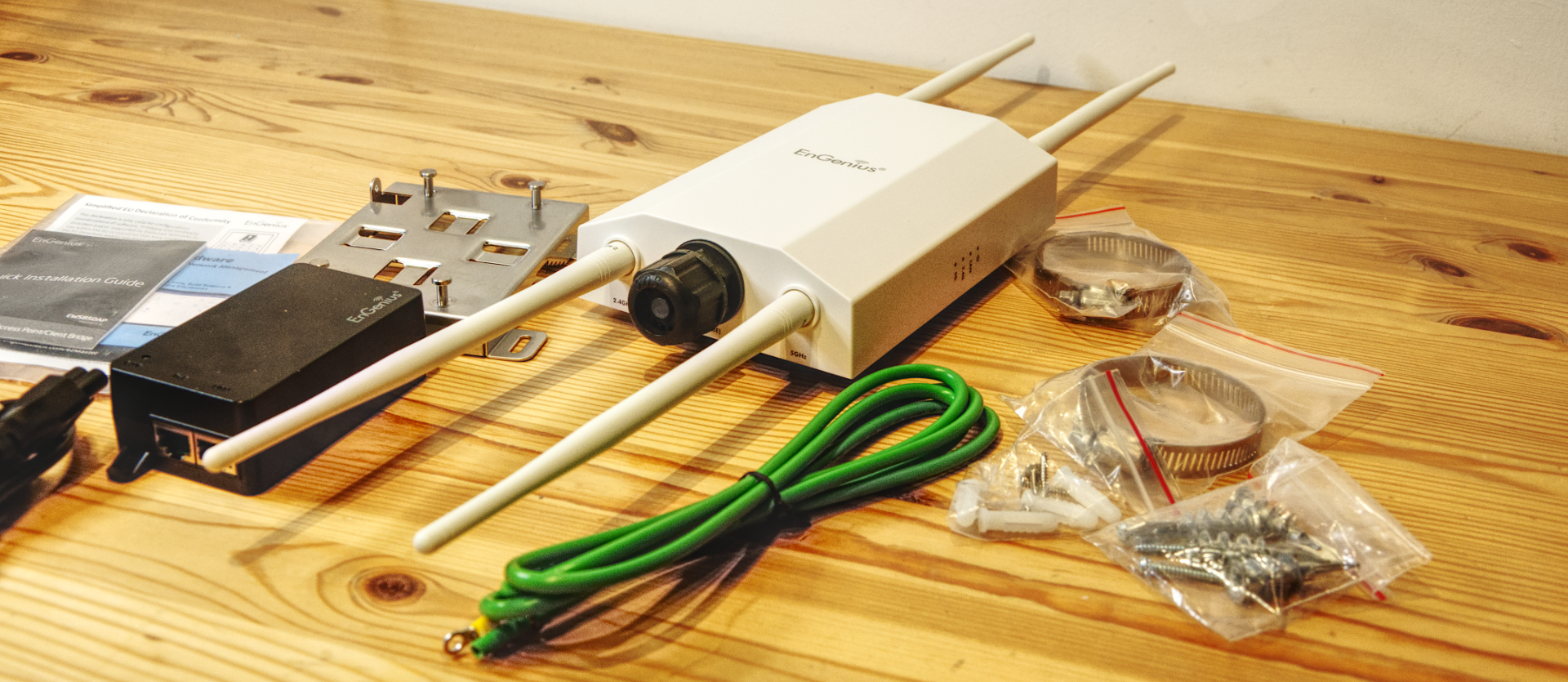TechRadar Verdict
Another high-quality mesh enabled 802.11AX access point from EnGenius that uses Power-Over-Ethernet technology. While the PoE injector isn’t ideal, and the WiFi 6 specification is modest, this is still excellent equipment.
Pros
- +
PoE+ 2.5GbE
- +
Built for purpose
- +
8 SSIDs
Cons
- -
Included a 1Gbit PoE injector
- -
Needs handmade Ethernet cables
- -
Only 2x2 configuration
Why you can trust TechRadar
While getting good WiFi connections inside was once a challenge. Now the focus is moving to exterior performance, especially for those in the hospitality sector as an example.
The caveats with placing this type of equipment in the great outdoors are that it needs protection from the rain, snow, and wind, but it also must have power and a data connection to internal network services.
EnGenius has an enviable record of accomplishment for delivering internal MESH enabled wireless infrastructure. With its new EWS850AP, the company is looking to repeat that success for those needing external wireless networking.
- These are the best Wi-Fi extenders
- Consider also the popular Google Wifi
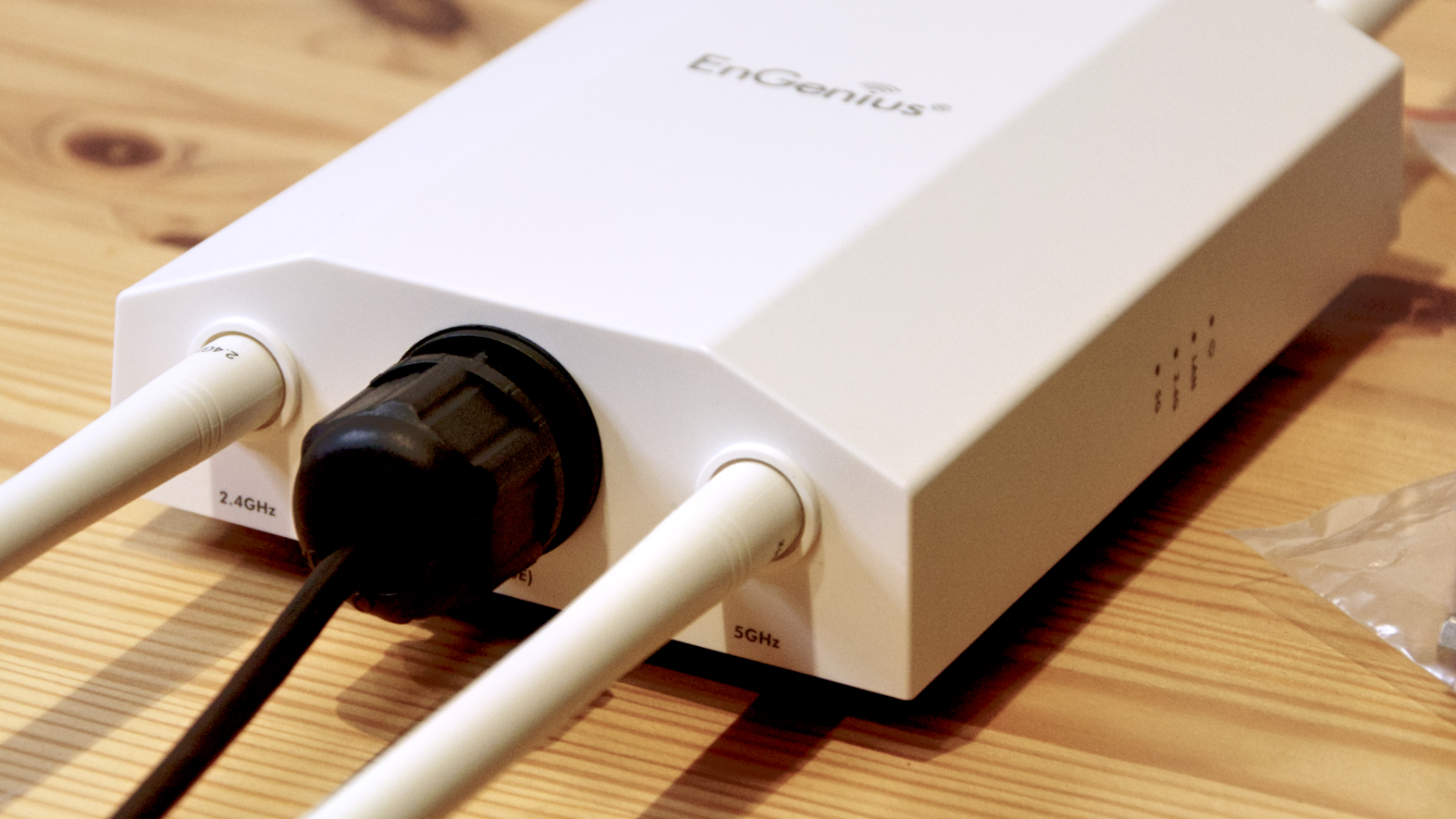
Price
The pricing of the EnGenius products reflects that it is designed for business users rather than the home consumer, though some home users might be interested in this specific device.
In the greater scheme of what EnGenius offers, the EWS850AP is the only WiFi 6 class access point they currently make for external use, though they have a wide range of WiFi 5 level access points and PtP/PtMP Bridges.
Direct from EnGenius online, the EWS850AP costs $399, though we found it on Amazon.com for $343.57.
Availability in the UK and Europe isn’t strong, and those outlets selling this hardware are often importing it from the US and charging extra for the high cost of transport. Therefore, finding it for less than €370 in Europe might be challenging.
Hopefully, these distribution issues will ease at some point, making this router cheaper for those that are interested in it.
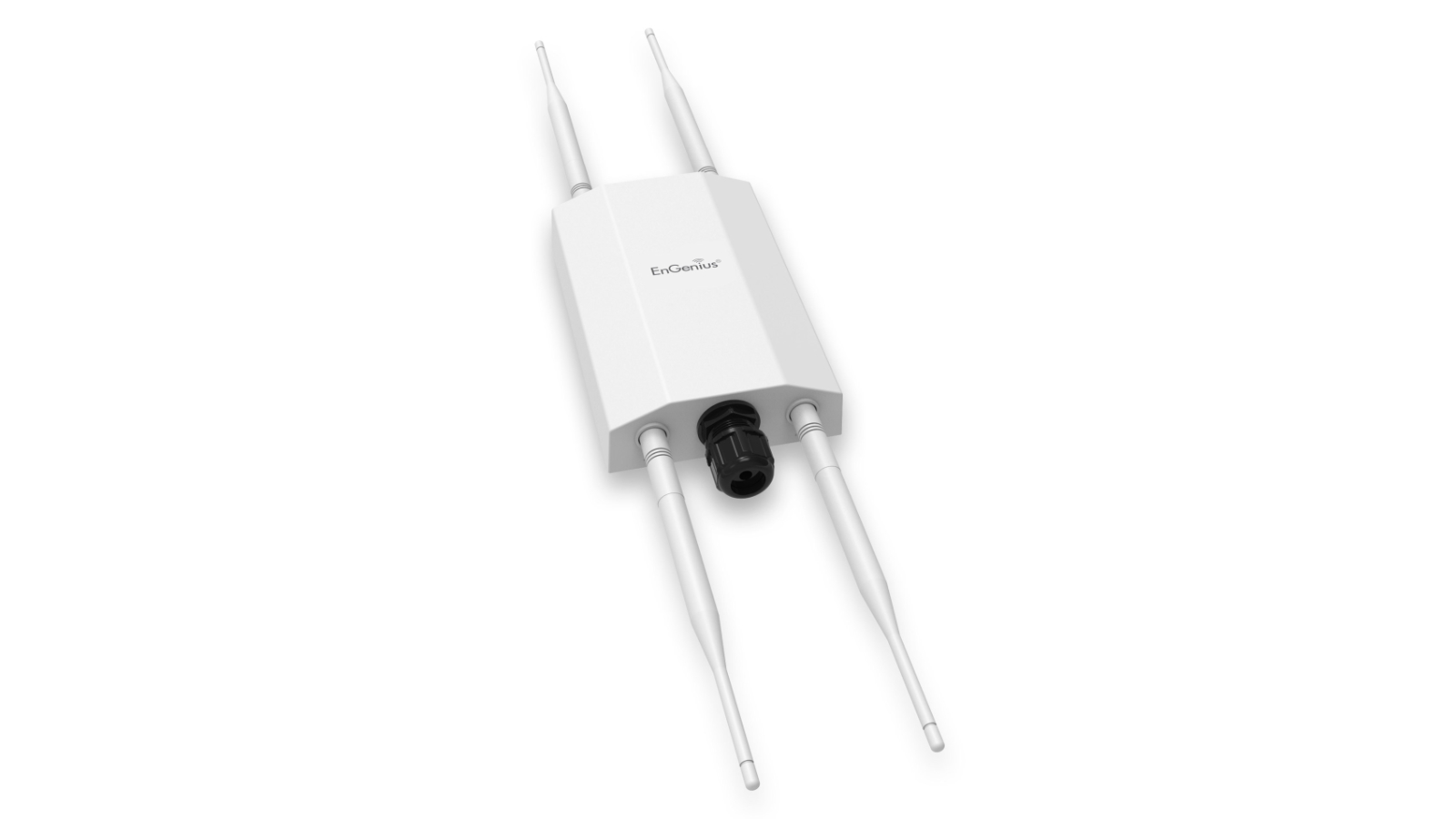
Design and features
The designers at EnGenius are likers of simple forms, as the EWS850AP externally is little more than a bevelled box with an entry point on the bottom for the connecting cable and four threaded connectors for each of the 20cm long antenna.
This unit can be mounted directly on a wall or a metal pole, and all the hardware needed to accomplish either comes in the box.
A metal mounting plate is used in both scenarios, and this can either be screwed to a wall or with two metal straps secured to a vertical pole. The plate has four projecting studs that go into corresponding lugs on the access point, and a single screw secures the two from being separated.
EnGenius have excellent documentation for this product, but one place it is slightly lacking is the less than detailed section about installation.
For it to work, an Ethernet cable, carrying both power and data, must be inserted via a waterproof grommet underneath.
We experienced issues with this aspect that we’ll talk about later, but it wasn’t as easy to connect this device as it initially seemed, and there are a few snags with the mechanics of the connection.
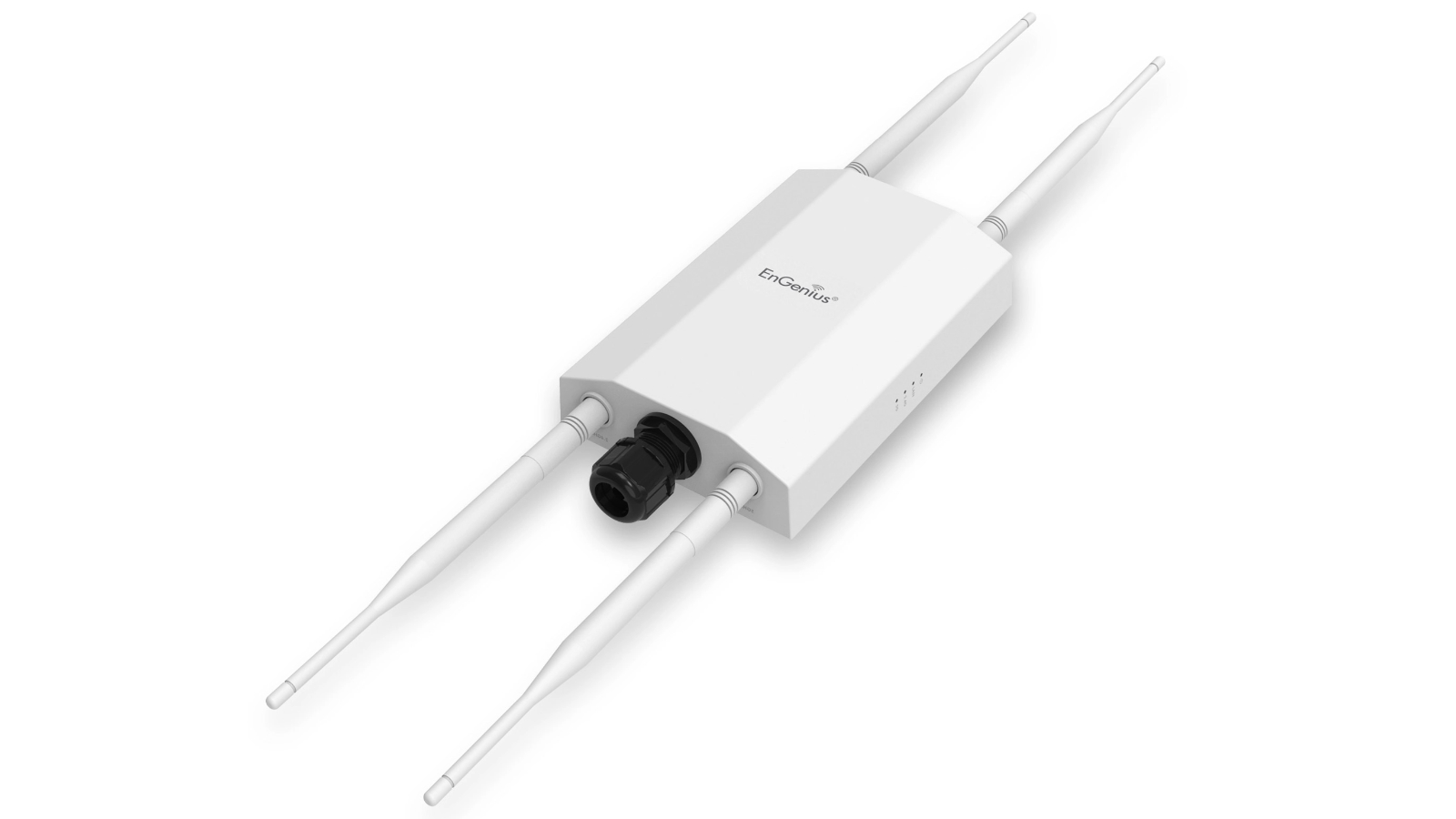
But, the critical part of this product is how it connects to the rest of the world and is also powered.
The Ethernet LAN port is PoE 2.5GbE, enabling it to simultaneously transmit data and power over a single LAN cable. That’s good for those wanting the very best performance and a 2.5GbE switch. Unfortunately, the EPA5006GR PoE injector EnGenius included is only a gigabit specification device, undermining that option.
EnGenius makes a 2.5GbE PoE injector, the EPA5006HAT, costing an additional $59.99.
Though, we can’t confirm that this will work with the EWS850AP. Given the relatively high cost of this hardware, the lack of a 2.5GbE PoE injector is disappointing.
What’s good about this hardware is that it is made to survive the elements, and any decent handyperson should be able to get it up on a wall or pole in short order. And, with the use of PoE (Power over Ethernet), a single cable installation is superior to any option that involves the distribution of power outside a building.
What’s a slight disappointment is that this is only a 2x2 WiFi configuration, meaning that it only supports two channels on each frequency with the four antennas.

In use
The instructions tell the purchaser to “Connect one end of the Ethernet cable into the LAN port (PoE) of the AP and the other end to the PoE port on the PoE adapter.”
That’s what you need to do, but the specifics of that process aren’t discussed in any greater detail in the documentation.
To access the Ethernet port, you must remove the threaded plastic barrel and remove a rubber grommet designed to seal the cable against water ingress.
What’s not documented is that the grommet splits into two parts allowing it to seal once the RJ45 end of the cable passes through and is connected to the port inside the threaded barrel
We worked out how this was meant to go together eventually, but a step-by-step guide to this part would be helpful for many.
But, what also isn’t documented is how limited the space beyond the grommet is. If you terminate Ethernet cables, this won’t be a problem. But if you use pre-made cables that come with a boot of any kind on them, as we did initially, then you can’t get the barrel cover to screw down and therefore waterproof the unit.
Should you wish to replace the cable at any point, then you need to have a long screwdriver handy to unlatch the block from the receptacle since it's impossible to get a finger in there.
Another area not covered in the documentation is earthing the device. This is critical, as it might be struck by an electrical storm. An earthing strap is included, but no advice is given about how this might be deployed and what the best policy is regarding them. As the cable is only about 1.6m long, it also assumes that the access point won’t be very far from the ground or some other grounding hardware. More information would again have been useful.
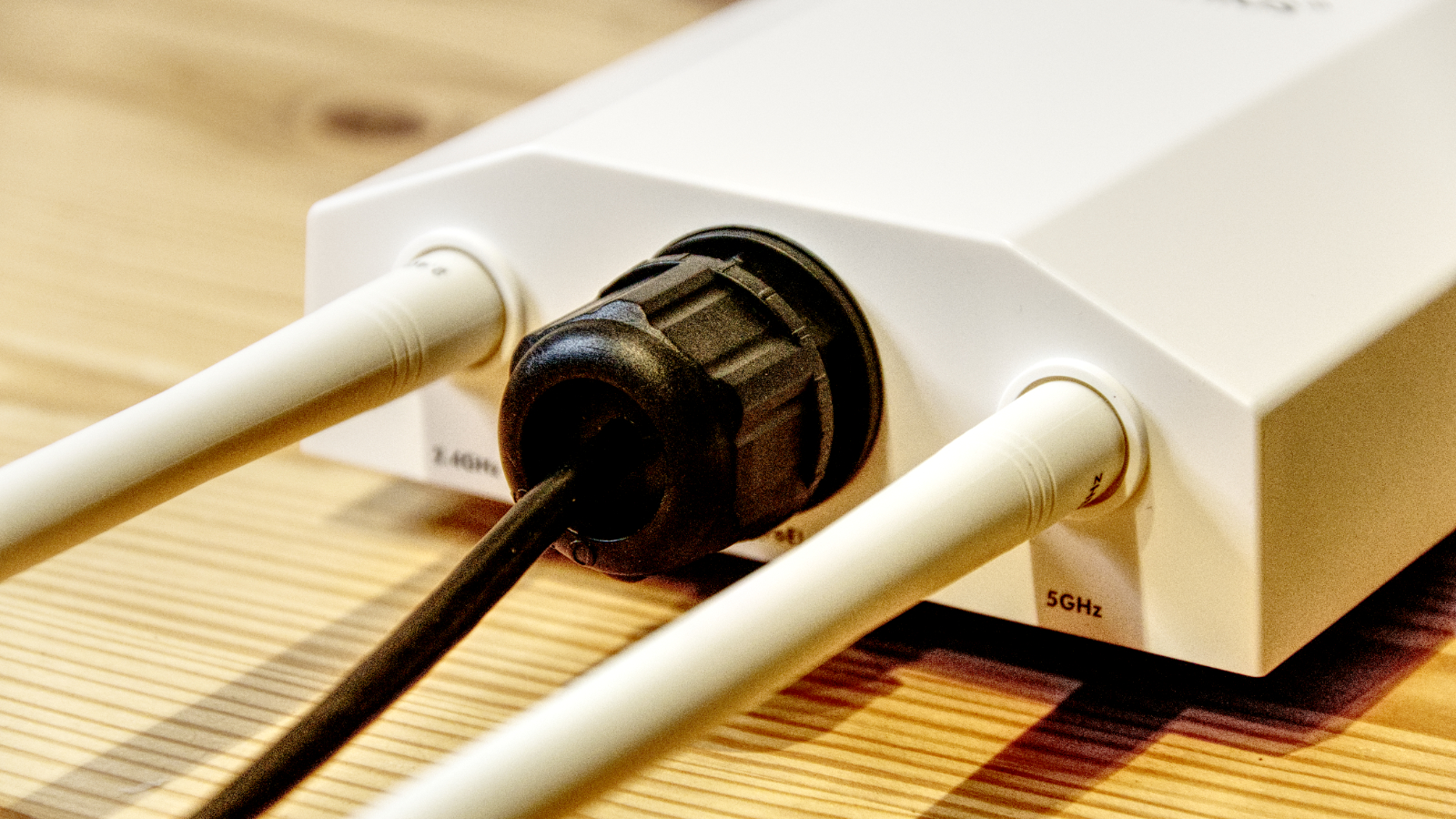
Once over the installation hurdles, the setting up of the access point via its web interface is remarkably straightforward, and like the other EnGenius routers that we’ve seen before.
When experimenting with the hardware, we spent some time in the web interface and discovered that it is almost identical to the indoor EWS377AP we’ve previously tested.
It has the same enterprise-friendly security features, the ability to define up to eight SSIDs, and so on. The only changes we noticed were that the EWS850AP v1 has significantly more available memory than the older design and the controls to adjust signal power output as disabled on the outdoor access point.
Any IT specialist that has worked with previous EnGenius equipment should have no issues with this design as it is consistent with other access point hardware from this brand.
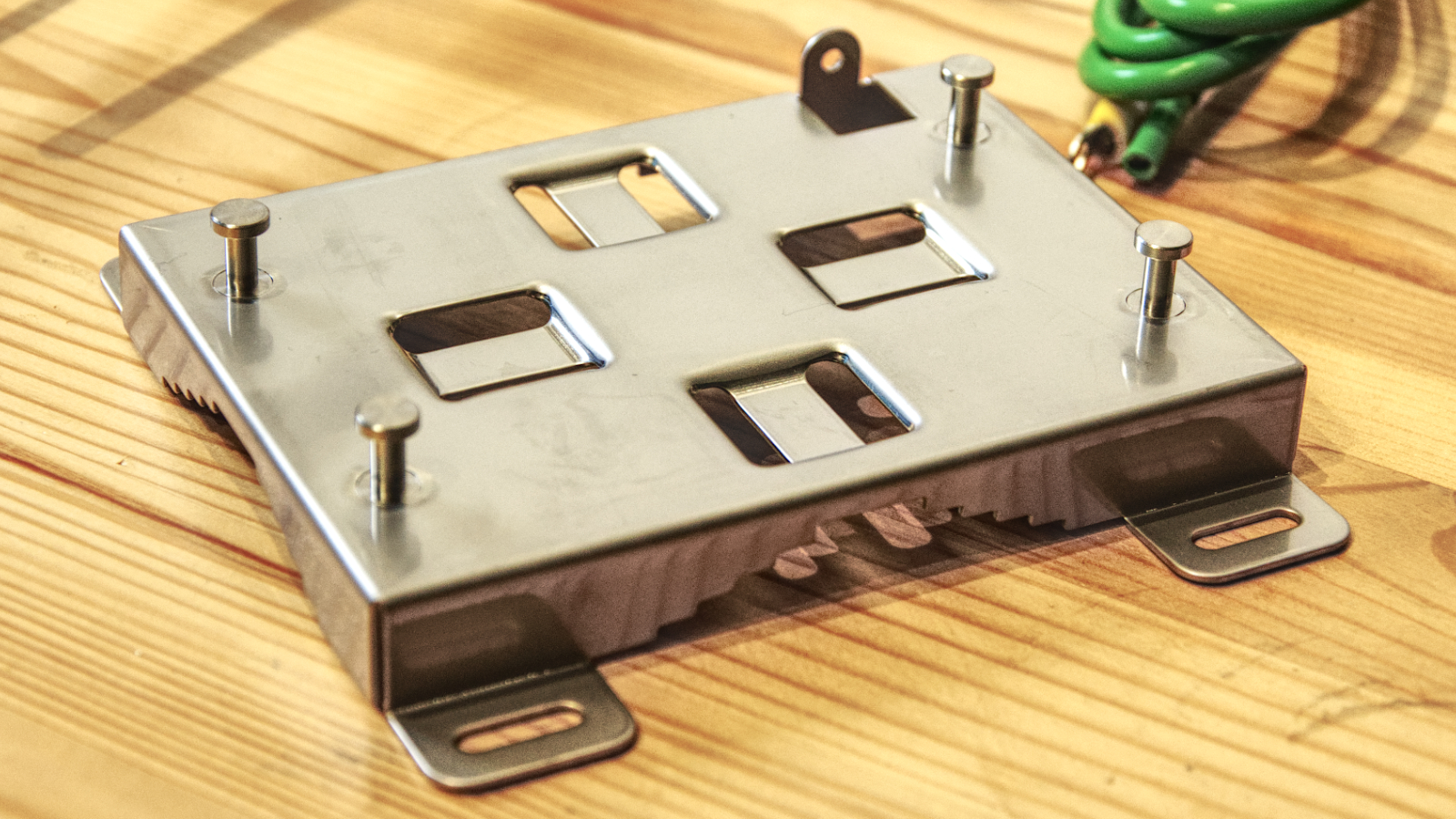
Performance
For a 2x2 WiFi 6 access point, the performance of the EWS850AP is excellent. And, easily one of the fastest we’ve ever tested. But, with just two transmitting and two receiving antennas, the bar is set rather low, especially when compared to some of the 4x2 hardware.
Or rather, we should say that the performance between individual AX class adapters is good. It’s just that the total bandwidth available to distribute between connecting devices that is limited, and therefore it would perform poorly if the number of simultaneous users was high.
How high? That’s an impossible question to answer accurately in a general way. Any random pool of connected devices with differing capabilities are likely to either make the situation less likely to frustrate those connecting or considerably worse. And, as those devices move around, the situation would be dynamic.
What we can theorize is that if this hardware is used in MESH mode and it is relaying a backchannel from other access points, it might suffer issues with fewer users due to the lack of available bandwidth for talking to the client devices.
Why EnGenius didn’t give this unit the same capability as their excellent indoor access points is curious, and we suspect that an enhanced version of the EWS850AP is likely to appear at some point to address these limitations.
We should also mention that if the access point can connect via 2.5GbE, there isn’t enough wireless bandwidth in the unit to use that connection fully. Therefore it might not provide a significant improvement over gigabit PoE connection in some circumstances.

Final verdict
EnGenius is evidently listening to reviewers and customers and has included many critical parts to get this device working straight out of the box, like a PoE injector.
While we won’t entirely forgive them for bundling a 1Gbit PoE injector with a 2.5GbE access point, but that’s still an improvement over some other products that came with no injector at all.
We did eventually work out why the injector isn’t the one we’d have expected. The EPA5006GR has a special feature that allows it to send a reset signal to the access point.
Due to waterproofing, there is no reset button on the unit, so this is necessary if you ever want to return the router to factory settings (like you forgot the password).
The documentation says only to use the EPA5006GR to power the unit, so until EnGenius comes up with a 2.5GbE version with the reset capability, this product can’t be used in its highest performance network mode.
That point aside, what the EnGenius EWS850AP represents is relatively easy to deploy and manage solution that delivers good performance over an excellent range.
However, considering its cost, it has a modest channel selection, and the lack of a 160Hz backchannel is slightly disheartening. With four antennas available, we expected to receive on all four, not just on two.
Using WiFi 6 technology that caps the total bandwidth at 1750Mbps, and on WiFi 5 and 4, reduces that value to just 1157Mbps.
How much of an issue this for the purchaser will depend on how many external connections they expect to support simultaneously and much bandwidth each user needs.
If those connecting are merely surfing and collecting email, then this will work acceptably with 20 or more users, but once they start streaming 4K video, down or up, that number might drop down to less than 10.
It's worth considering that if they’re all pulling data from the Internet, the bottleneck is more likely to be the Broadband connection, not the EWS850AP.
EnGenius makes well designed and made gear that delivers solid connections, but at a price. And, for some, that price is too high. For others, it's more important that it justifies the investment in time, installation costs and improvement in external WiFi performance, and in these respects, we’ve got much less of a concern.
- Also take a look at the best Mesh Routers 2021 for the home
Mark is an expert on 3D printers, drones and phones. He also covers storage, including SSDs, NAS drives and portable hard drives. He started writing in 1986 and has contributed to MicroMart, PC Format, 3D World, among others.
